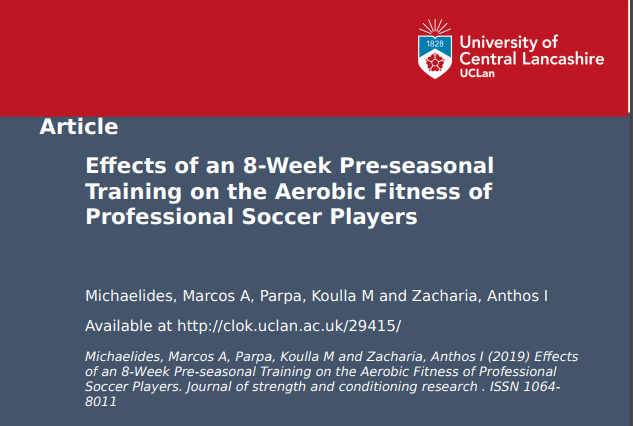The pre-season training period in soccer aims at developing the physical requisites for competition.
Unlike individual sports, soccer is characterized by a shorter pre-season training period and a longer competitive training period, especially when teams participate in international competitions (9).
This requires careful strategic planning for training periodization because the pre-season training period consists of intense conditioning as well as a number of friendly games in addition to the technical and tactical practices that are concurrently scheduled (12).
Consequently, the training load during the pre-season training period is higher than that of in-season training (20) and is expected to cause significant training adaptations on the aerobic system.
Interestingly, recent studies (10,18) demonstrated that when short intense running intervals (RIs), 30 seconds–4 minutes, are combined to the basic training volume, aerobic performance enhances significantly.
Bangsbo (1) demonstrated that 90% of the total energy during a soccer game is supported by aerobic metabolism. Thus, the major aim of the preseason training period is to increase aerobic capacity that translates into increased running activity and decreased walking time during competitive soccer games (19).
Helgerud et al. (14) demonstrated that maximal aerobic capacity (V̇ O2max) enhancement leads to improved soccer performance, substantiated as increases in the distance covered, the level of work intensity, the number of sprints, and the number of involvements with the ball during competitive games.
Although V̇ O2max fluctuates in professional soccer players (4,5,13,15,24,27,38), those who compete at superior playing standards and championships demonstrate greater levels (26,38).
The greater V̇ O2max gain, however, is usually evident after a successful pre-season training program, specifically at the beginning of the competitive season (15,27).
The improvements observed are attributed to a higher aerobic contribution and the reduced involvement of the anaerobic energy system in energy expenditure (1).
Evidently, running performance in endurance sports such as soccer is not only limited in high levels of V̇ O2 max but also in other aerobic performance indices such as the lactate threshold (LT) and its associated running velocities (33).
Thus, the purpose of this study was to examine the effect of the proposed 8-week pre-season training program on the aerobic performance indices of professional players.


